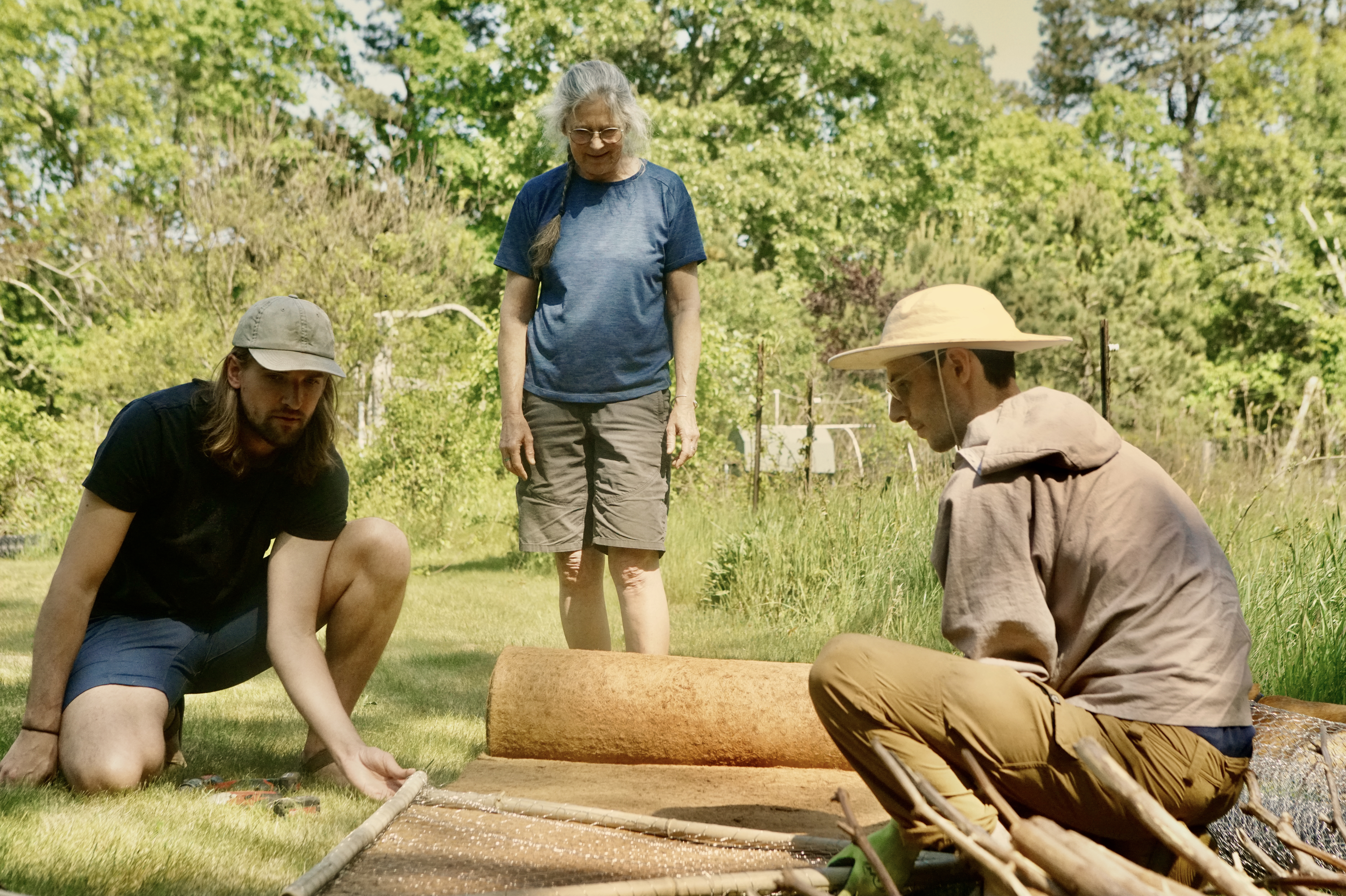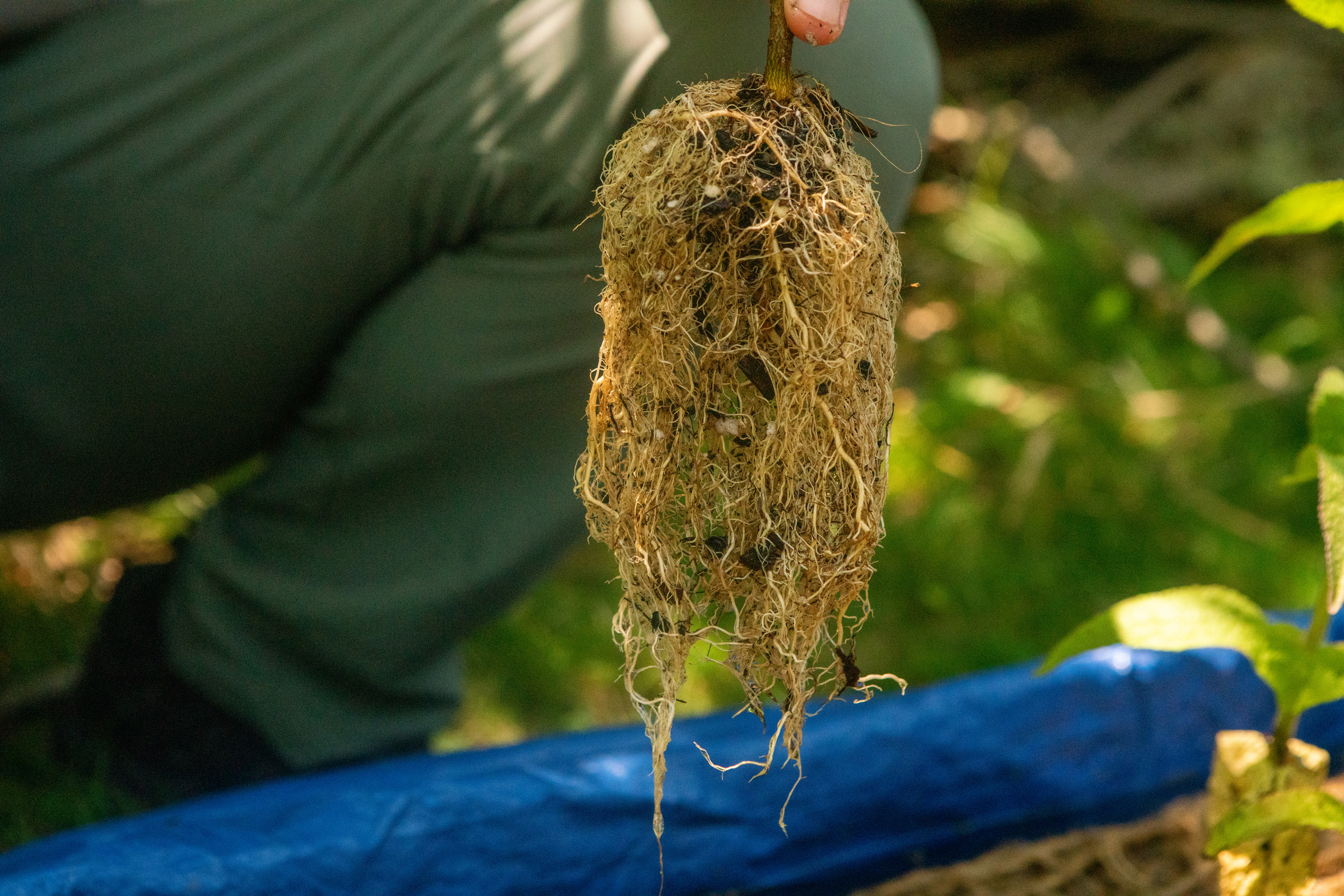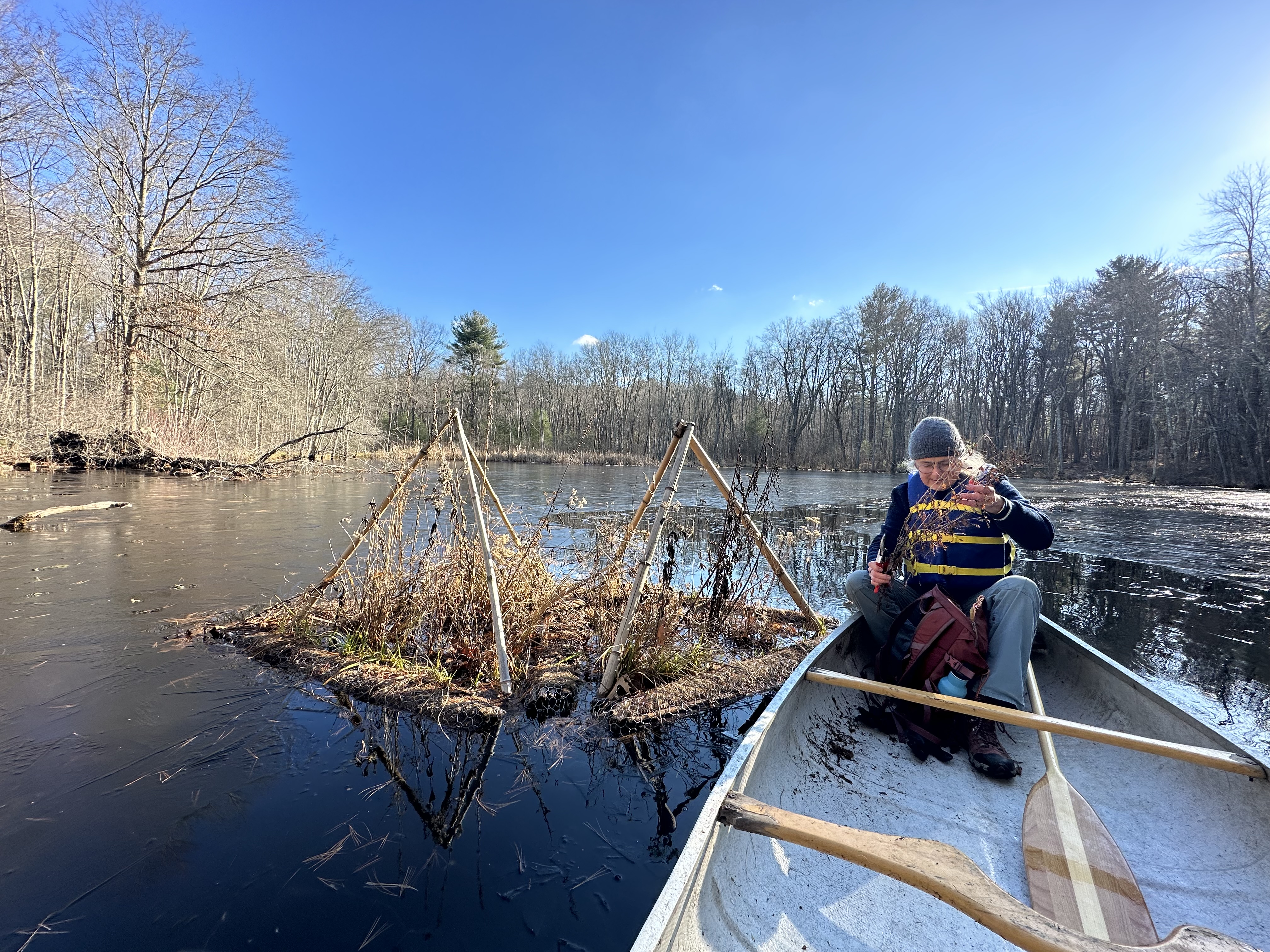
September 2023
December 2023

Development of design. Drawings by Matthew P. Muller and Hope Leeson.




Harvesting Japanese Knotweed at the Cooperative Knotweed field day initiated and led by Max Fertik with over 10 volunteers.

Constructing the pontoons and raft





Planting the floating wetland






Installing at Ice Pond in Southborough, MA as part of the Art on the Trails: Transformation 2023 outdoor exhibition






Collecting water samples with the plankton net, collecting seeds, and observing the fibrous root structures that grow underneath

Below and Above, A Floating Wetland Supports Life is a collaboration between Hope Leeson (field botanist), Holly Ewald (public artist), Alexandra Ionescu (ecological artist-researcher and Biomimicry professional), Maxwell Fertik (multidisciplinary artist and designer), August Lehrecke (Pneuhaus co-founder, designer and builder) and Matthew Muller (Pneuhaus co-founder, designer and builder). Our mission is to engage the community in constructing art with ecological functionality that creates the propensity for nutrient-impaired waterbodies to regenerate.
Human activities introduce pollutants like fertilizers, pesticides, road salts, pet waste, and sediment into freshwater ecosystems. When it rains, as a result of increased impervious surfaces, these pollutants flow into water bodies, leading to excessive algae growth. As algae present in water respond to excess nutrients with increased growth, algaecides are often used to control the algal bloom, but they only address symptoms and disrupt the natural balance of the ecosystem.
In contrast, native wetland plants within a floating wetland ecosystem consume nutrients, while creating a habitat for the more-than-human world below and above the water line through the growth of plant and their roots suspended in the water column on a buoyant raft. Root structures provide a home for fungal, bacterial, phytoplankton, and zooplankton communities that break down these nutrients that the plants can absorb and need for their growth. As such, a floating wetland cycles nutrients, regenerates the food web and amplifies the natural processes between plants, sunlight, water, and microorganisms.
As a collective, we have a shared interest in combining our talents and passions in the arts and sciences to develop a way to heal polluted waters. Floating wetland ecosystems heal water by regenerating the food web. The genesis of an ecosystem begins with microorganisms. We are learning how to initiate a propensity for nutrient cycling and how to create the conditions for collaboration with the more-than-human world.
Our objectives are:
- To cultivate public curiosity and engagement no the role of native wetland plants in addressing stormwater runoff.
- To introduce the public to nature-based solutions that improve water quality and create habitat for other species.
- To demonstrate the value of the artist's lens on addressing freshwater pollution and engaging the community in ecological restoration projects.
- To create a buoyant structure using diverse plant materials in contrast to petroleum-based materials.
- To regenerate the food web through a natural and passive way as an alternative to chemical treatments.
The structure is currently floating on Ice Pond at the Elaine and Philip Beals Preserve Southborough, Massachusetts as part of the Art on the Trails exhibition. Our work has recently been featured on EcoRI. We presented our work at the Stormwater Innovation Expo on October 18th.
This project combines diverse ways of knowing to explore the artist’s role in creating ecologically functional art. An alternative to petroleum-based materials used for buoyancy, it proposes two modular floating wetland structures made of dried Japanese Knotweed. We are learning from the ways in which indigenous communities have built floating islands for hundreds of years by harvesting natural materials found in their surroundings.
The Japanese Knotweed used to create this floating wetland was harvested as dry stems from Mashapaug Pond and Gano Park in Providence, RI. Utilizing invasive species removes their biomass from the environment and allows us to repurpose them as a buoyant structure. By doing so, we are transforming this invasive species into an opportunity to improve water quality and promote biodiversity.
Over time, the 20 native wetland plant species that we have selected for this floating wetland, will contribute to nutrient removal by upcycling them into their leaves, stems, roots, and flowers. Importantly, the plants in this floating wetland will grow dense columns of roots into the water as they seek nutrients. The surface area within the root layer is key to floating wetlands, where diverse communities of bacteria, algae, protozoans, and fungi form a biofilm, also known as the periphyton. The periphyton cleans water by nutrient uptake, filtration, oxygenation, and toxin removal.
Ice Pond, where the structure is currently floating doesn’t require remediation as it is a thriving ecosystem. Nonetheless, it provides us with an opportunity to learn how floating wetlands create a habitat for non-humans, observe the decay of natural materials, document the growth of the native wetland plants, learn what microorganisms find a home on the roots of plants, and think through the lens of timescales unknown to us.